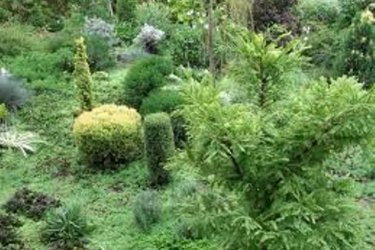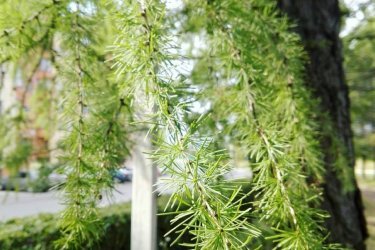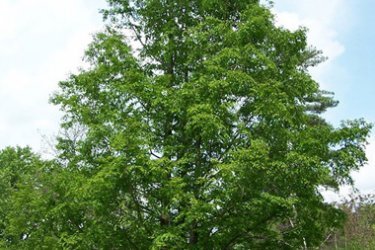Larch
Some conifers behave more than surprisingly: spruce or pine, for example, delight the eye with the greenness of their needles throughout the year, while others, such as larch, shed their needle leaves for the winter. In addition to larch, this behavior, atypical for conifers, is characteristic of swamp cypress and metasequoia.
When planning to grow larch on a country plot, you need to remember that you won’t be able to admire a luxurious green tree against the backdrop of snow drifts.
Planting larch
Larch gets along well with various trees and shrubs, the only caveat is that it is not recommended to plant it next to birch trees. As a result of root competition, the coniferous tree will suffer from such a neighborhood - good soil moisture is important for larch.
The tree grows quickly, the composition of the soil is not a very important factor for it. An adult plant can reach a height of 50 m, its crown is beautiful and quite wide. Different varieties of larch can vary greatly in appearance.
The tree can be grown in any climate zone, even in dry continental climates.
Not every nursery can find larch seedlings, but you can try grow larch from the branch. If there is nowhere to get planting material, you will need to buy larch seeds, or find an adult tree in the park and collect the seeds yourself.
Cones ripen in the fall; in the second half of winter, the cones crack and the seeds fall into the ground.
Under natural conditions, self-seeding of larch is not a common phenomenon.The reason for this is not poor seed germination, but very weak sprouts. They are very tender and cannot withstand competition from other, stronger plants; even grass seedlings can destroy them.
Stratification is not a necessary condition for seed germination, but it will have a positive effect and increase the germination percentage.
Growing larch seedlings at home will allow you to get fairly strong seedlings:
- after the seedlings grow, they are picked
- water in moderation, avoiding overflow
- the soil in containers is mulched after sowing, but as the seedlings grow, the mulch is removed
Features of care
Since seedlings are very susceptible to fungal infections, it is recommended to systematically treat them with antifungal drugs. The second option is to preventively treat the seeds in hydrogen peroxide for 2-3 hours.
It is recommended to plant two-year-old seedlings in open ground; they are transplanted in early spring, before the buds have yet opened. Freshly planted trees are systematically watered throughout the summer. An adult tree requires virtually no watering.
Proper organization of wintering is important - high-quality shelter for the tree trunk circle will be required.
An adult tree will require periodic feeding, which should contain phosphorus and potassium components. Humus-enriched soil will contribute to the active development of the tree.
An established and well-groomed tree will delight its owners with its rapid growth: it can grow by about half a meter per year. Conifer flowering can begin at 9 or 10 years of age.



